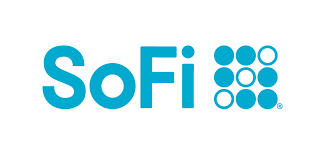Should I Open a New Savings Account During the Coronavirus Crisis?
Don't open a new savings account without weighing the pros and cons.
Staying healthy is the top priority during the COVID-19 pandemic, but a close second should be managing your finances. With the stock market plunging and millions of Americans out of work for the foreseeable future, many people are trying to find a balance between earning interest on their savings and keeping those funds easily accessible in case they need them to cover their basic expenses.
A savings account strikes that balance. It's FDIC-insured, earns interest, and keeps your money in easy reach. But there are a few things you need to keep in mind if you're considering opening a new savings account during the pandemic.
High-yield vs. traditional savings accounts
High-yield savings accounts offer industry-leading APYs. While the national average savings account APY is just 0.08%, some high-yield savings accounts can have APYs close to 2%. This dramatically increases the rate at which your savings grows.
High-yield savings accounts are usually offered by online-only banks. These banks have lower overhead costs because they don't have a network of branches to maintain, so they can offer you better rates.
Traditional savings accounts offered by brick-and-mortar banks usually can't match these rates and often charge more in fees. Their key advantage over high-yield savings accounts is the option to visit branch locations for in-person customer support. But in the current climate, brick-and-mortar bank customers are limited to the same support options as online bank customers anyway, because social distancing requirements have forced many branches to close indefinitely.
If you are considering opening a new savings account and want to earn as much interest as possible, a high-yield account is the better choice. But if you're more concerned about easy access to your money and you already have a checking account with a brick-and-mortar bank, a traditional savings account could be the smarter option.
Advantages to opening a new savings account right now
Savings accounts provide a measure of security in these uncertain times. You can earn a modest amount of interest without exposing your money to the ups and downs of the stock market, and you can withdraw your money as needed.
Savings account interest rates aren't what they were even a few weeks ago, and it's probably going to be a while before they rebound. So don't expect to rake in hundreds of dollars in interest anytime soon. Rates could even sink a little further yet if the financial crisis extends for months more. The good news is, when rates rise again, you'll start earning more interest on your savings without having to do anything.
Some banks are using sign-up bonuses to draw in new customers, and this could earn you a few hundred dollars. But you won't get that benefit right away. Most sign-up bonuses require you to put a certain amount of cash in your savings account and leave it there for a set number of days before you can receive your bonus. Still, with the end of the COVID-19 pandemic nowhere in sight, a few hundred dollars could come in handy in a couple months.
Disadvantages to opening a new savings account right now
A key drawback of savings accounts is that you're limited to six convenient withdrawals per month. This includes electronic transfers, online bill pay, and phone transfers, but does not include withdrawals made at an ATM or at a branch location. Exceeding these limits results in a penalty, per federal law. If you anticipate withdrawing money from your savings account regularly, a checking account might be a better choice for these funds.
If you open a new savings account at a new bank, you must also be prepared to wait a few days to access cash. Most savings accounts don't come with debit cards, so you'll have to transfer your funds to a checking account at a bank with branches or ATMs near you to get your money.
Another thing to bear in mind is that savings account rates might not be done falling yet. If they drop lower, you could earn even less interest on your savings. If you’re concerned about this and don’t anticipate needing to use your savings anytime soon, a certificate of deposit (CD) might be a better bet. These accounts lock in your rate at the time of opening, so you know what you’ll get.
The bottom line
A savings account is a smart place to put your cash right now if you want to keep it accessible but don't anticipate making daily withdrawals. It can help you earn some interest on your savings, and you might even get a sign-up bonus too. However, the most important thing to remember is that you'll still have this account even after the current crisis ends.
If you don't anticipate using the savings account regularly once life returns to normal, it's probably not worth opening. This is especially true if your account carries maintenance fees or account inactivity fees. Focus on choosing an account that you plan to keep over the long term.
Our Research Expert
We're firm believers in the Golden Rule, which is why editorial opinions are ours alone and have not been previously reviewed, approved, or endorsed by included advertisers. Motley Fool Money does not cover all offers on the market. Motley Fool Money is 100% owned and operated by The Motley Fool. Our knowledgeable team of personal finance editors and analysts are employed by The Motley Fool and held to the same set of publishing standards and editorial integrity while maintaining professional separation from the analysts and editors on other Motley Fool brands. Terms may apply to offers listed on this page. APYs are subject to change at any time without notice.



